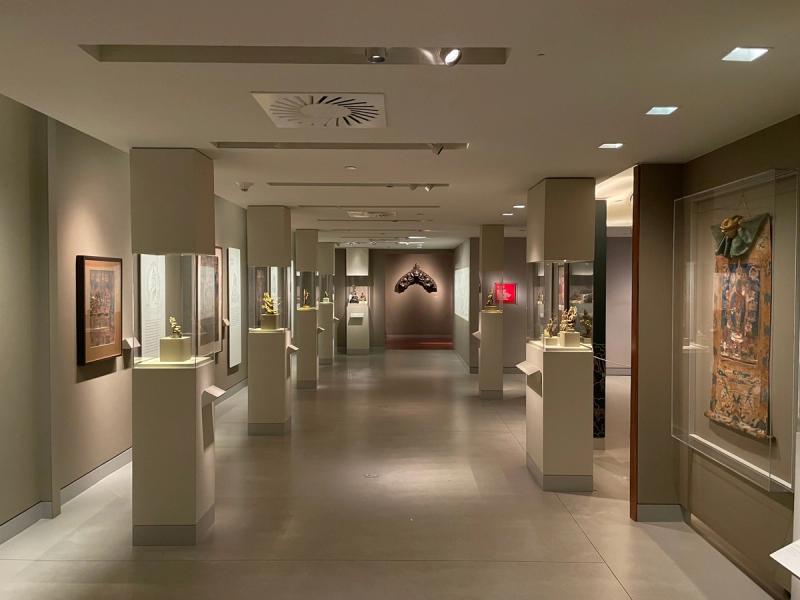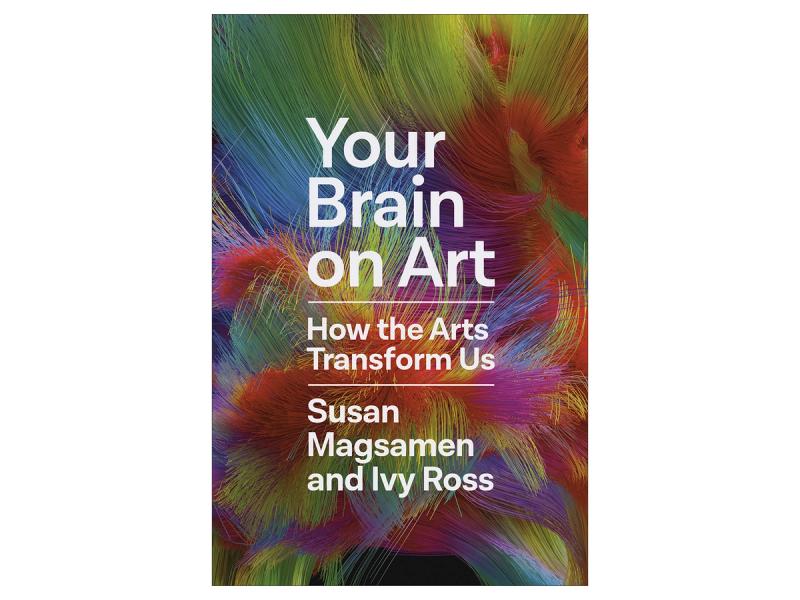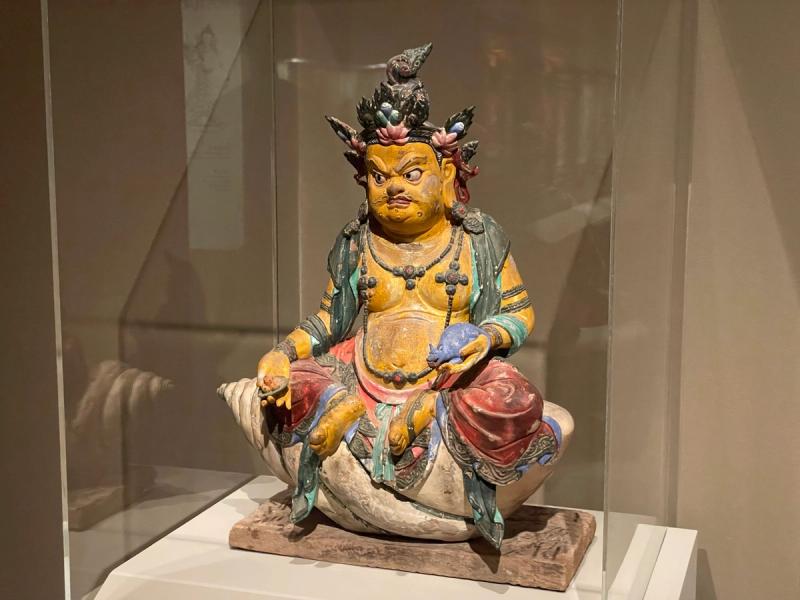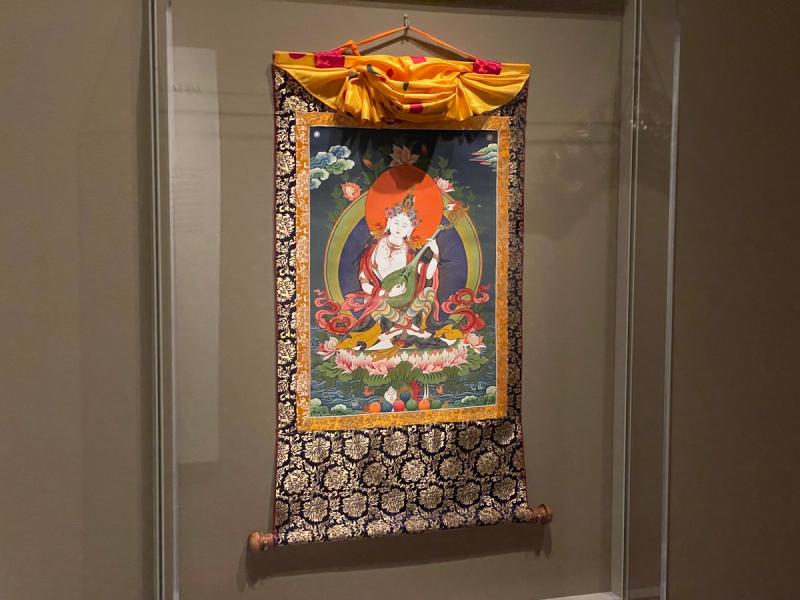
Ivy Ross and Susan Magsamen on the Science-Backed Pleasures of Neuroaesthetics
It’s a Friday in the late afternoon, and I’m standing with Ivy Ross, Google’s vice president of hardware design, and Susan Magsamen, the founder and executive director of the International Arts + Mind Lab at Johns Hopkins University, on a quiet second-floor landing of the Rubin Museum in New York. The two have just published their new book, Your Brain on Art: How the Arts Transform Us (Random House), which takes a scientifically backed look into neuroaesthetics—or, in other words, how engaging with art impacts our bodies, hearts, and minds. I thought, why not walk around the museum’s galleries and talk about the subject while surrounded by these Nepalese, Tibetan, and Bhutanese artworks and sacred images?
At the entrance to an exhibition titled “Gateway to Himalayan Art,” I ask the two how they met. “I was working at a restaurant cocktail bar. That much is true,” Magsamen (the guest on Ep. 34 of our At a Distance podcast) sings to the tune of Human League’s 1981 hit “Don’t You Want Me.”
“I wish that were so,” Ross (the guest on Ep. 11 of our Time Sensitive podcast) says with a laugh.

In reality, Magsamen and Ross’s deep friendship—which has blossomed into collaborations such as the 2019 Milan Design Week exhibition “A Space for Being” and now into a book—began with a LinkedIn message from Magsamen to Ross. “I wrote to her blindly: ‘Hi, here’s what I do. And I really think that we might have something in common,’” Magsamen recalls.“It was like a blind date,” Ross says.
What was supposed to be a 30-minute introductory phone call turned into a lively three-hour conversation, with both canceling meetings that day to keep the call going. “It was a really salient experience,” Magsamen says. Adds Ross: “It rewired our brains.”

Shortly after, the two arranged a dinner with their husbands near Ross’s home in Mill Valley, California. Magsamen arrived with a gift for Ross: earrings. (Unbeknownst to Magsamen at the time, Ross had an early career as a jewelry artist, with works in the permanent collection of the Smithsonian American Art Museum in Washington, D.C.) “She hardly knew me,” Ross says. “It was our first date, and she brought me a pair of earrings that are actually earrings I would wear. I love them.” From there, they planned to host a salon in Ross’s living room that would begin with a single question: Have the arts ever impacted you? “It was like Noah’s ark,” Ross says of the salon. “We picked two painters, two dancers, two filmmakers, two photographers, and neuroscientists who flew in from Johns Hopkins.”
“The salon, for me, was so poignant,” Magsamen says. “There wasn’t a single story that was the same, yet people’s lives were immeasurably changed by art. Some people’s lives were saved by it.”
When the Covid-19 pandemic arrived, in early 2020, Ross realized she finally had time to write a book. “I didn’t have to commute to Google because of Covid,” she says. “I’m usually on the road three to four hours a day.” She also had the ideal co-author in Magsamen.
The three of us enter the gallery, an intimate, low-ceilinged space, entirely empty except for a few museum visitors in front of us. Slowly glancing at a 13th-century Tibetan statue of the Buddha Shakyamuni and another, from the 14th century, of the deity Vajradhara, Magsamen says, “There’s the idea of enlightenment in this space. Transcendence, transformation, enlightenment—all of these goddesses are all about enlightenment. There’s something poignant about that.” She pauses. “And they have so many hands, so many arms!”
“They’re making a lot of art,” Ross quips.

Next we enter a room titled “Materials and Techniques.” “Here is an aesthetic moment,” Ross says. “When you think about the lighting, the color, the shine, the sounds, the shapes. People think aesthetics are about making things look pretty, and that’s not really what it’s about. It’s about all of the things that we take in through our senses: touch, sound, light, color, smell.”
“How you come into a space really informs your perception,” Magsamen adds. “So the three of us, we might be seeing the same things, but we’re not getting the same thing back.”
Looking at a 17th-century Tibetan clay sculpture of Jambhala, the Hindu god of fortune and wealth, I mention the essential role of touch when it comes to neuroaesthetics. Magsamen replies, “There are three thousand nerves in each fingertip. That’s extraordinary. In your feet, there are more than seven hundred thousand nerve endings that come up through your spinal cord, to your thalamus, to your somatosensory cortex. You’re also bringing in touch through your lips. We’ve learned this recently: Your lips are the most sensitive part of your entire body. They have a thousand times more nerves than your fingertips.”
“I think our brain probably has fewer of these touch points than all of these other extremities,” Ross says. “But once you start to be aware of that—”
“It changes everything,” Magsamen says, noting that “sensorial literacy” should become a more central topic of discussion in education at large.

Next we look at a series of scrolls, dating from 2014, of Saraswati, a Hindu goddess representing education, creativity, and music, painted on cotton with a silk brocade by the Tibetan artist Buchung Nubgya. “It’s trying to communicate to us the importance of nature and the role it plays,” Ross says of the piece, which depicts a lute-playing Saraswati floating above an oversize lily pad and surrounded by flowers, clouds, and a serene body of water. “This is a perfectly symmetrical face.” She pauses. “Harmony. There’s a whole thing around harmony.”

Turning to an ancient Buddha sculpture behind glass, she continues, “When you think about all of the craftsmanship that went into some of these ancient works, these artists would stay in these flow states. We spoke to [the Buddhist meditation teacher] Sharon Salzberg, who said, ‘Art is the best form of meditation.’” Emphasizing the importance of human touch, she adds, “You feel it energetically. It gets transmitted.”
“That would be an interesting study,” Magsamen says. “I wonder, if you blind-tested people holding objects that are handmade versus [ones that are] machine-made, I would be curious if they could understand that—”
“Vibration,” Ross says.
Exiting through a third gallery titled “Purpose and Function,” we walk past a clay-colored wall—“These dark colors are very grounding,” Ross says—and then ascend one flight up the museum’s central Andrée Putman–designed spiral staircase. “This was the old Barneys, right?” Ross asks. (She’s right—it was—and it strikes me that her comment is yet another neuroaesthetic trigger.)
We end our tour at the museum’s third-floor Mandala Lab, an interactive, multisensorial space that opened in the fall of 2021. At its center is a circular LED wall sculpture by the New York–based artist Palden Weinreb. Made out of nestled resin circles, it pulsates with light and encourages visitors to engage in slow, calming breathing patterns. I ask Ross how it makes her feel. “Peaceful,” she says. “Actually, really joyful. It’s the progression of the light, the quality of the material, all the circles, and the depth.” She takes a breath. “The fact that it’s layered, it pulls you in.”